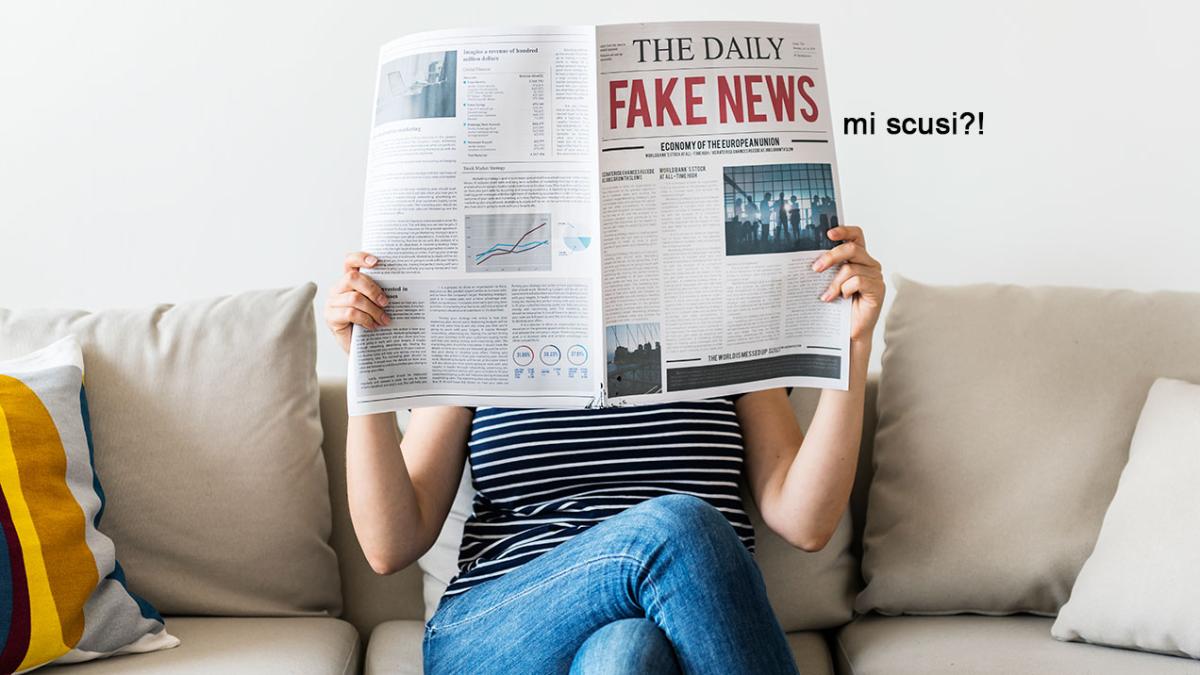
Have you ever scrolled through your Facebook feed and come across an earth-shattering headline, only to click through to the story and realise you’ve been stung by ‘fake news‘?

Who am I kidding? Of course you have! It’s 2019 and fake news has been on the rise since Donald Trump first coined the term back in 2016. Heck, by 2017 the term had gained so much traction that Collins Dictionary dubbed it ‘Word of The Year’.
But what exactly is fake news, and why should we care about it (aside from those annoying Facebook experiences)?
P.TV: What exactly is ‘fake news’ and how is it different from regular news?
FW: ‘Fake news’ is bascially authentic-looking manufactured media reports, usually based on real-life events, designed to deceive readers and viewers, often for financial or political gain.
Shared easily on social media, fake news can be a simple hoax or a sophisticated campaign. It can be disruptive at best and damaging at worst.
While it might masquerade as ‘news’ it does not have truth and fact as its basis, which are key elements of ‘regular news’.

P.TV: Why is fake news becoming more popular in today’s media?
FW: ‘Fake news’ has become a prominent curse in the modern media landscape since Donald Trump first spouted the term during the 2016 election campaign. The ubiquity of social media and people’s ease of access to it has helped fan the flames of fake news.
Unlike mainstream media which demands accountability for published works, social media users can hide behind a veil of anonymity. This enables social media users to create fake personas, fake sites and fake stories that demonstrate a blatant disregard of the ethical guidelines of more traditional publishing.
P.TV: Why is fake news problematic?
FW: Apart from its nuisance value and distraction from real news, fake news can be ethically and legally problematic when it affects public opinion and, as a result, public action, such as how someone might vote in an election.
It is troublesome for the mainstream media as people become cynical and distrustful about what they read, even when it is from an authentic credible source.
The term ‘fake news’ is also regularly and wrongly spat out by politicians and other prominent people when they want to discredit media reports that don’t align with their version of the truth.

P.TV: How can you spot fake news?
FW: It can be difficult to spot fake news as it is designed to look authentic and many people have been fooled, however, a number of organisations, such as Google, Spotify, Politifact and Factcheck, adopt verification tools for exactly this purpose.
For the everyday punter, they also recommend five simple ways to recognise false information online that include checking the original source of the media report. Ask yourself:
1. Does the site look legitimate?
2. Does it have an ‘about us/contact us’ page and are its articles date stamped?
3. Does the site have spelling mistakes? This is a dead giveaway.
4. If it is a social media account: When was the account created?
5. How many followers does it have and who are they?
Want to learn more useful life skills like how to identify fake news?
Macleay College offers a slew of practical courses teaching you everything from valuable Journalism and Digital Media skills to Business and Advertising industry know-how. Jump on over to Macleay College’s website for more info about the courses on offer.



